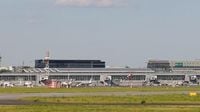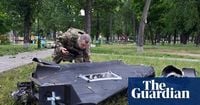In an unprecedented escalation of regional tensions, Poland shot down multiple drones that violated its airspace on September 10, 2025, during a large-scale Russian aerial assault on neighboring Ukraine. The incident, which Polish officials have called an "act of aggression," has sent shockwaves through NATO, Europe, and beyond, raising urgent questions about the security of the alliance’s eastern flank and the risks of wider conflict spilling over from Ukraine.
According to the Operational Command of the Polish Armed Forces, the drones repeatedly breached Polish territory as Russia launched one of its largest airstrikes on Ukraine since the invasion began more than three years ago. "During today’s attack by the Russian Federation targeting targets in Ukraine, our airspace was repeatedly violated by drones," the command announced in a statement early Wednesday, as reported by Reuters. The military confirmed that weapons were used to neutralize the objects and that operations were underway to locate the downed drones.
Prime Minister Donald Tusk addressed the nation and the world, confirming the seriousness of the situation. "An operation is under way related to multiple violations of Polish airspace. The military used armaments against the objects. I am in constant contact with the President and the Minister of Defence. I received a direct report from the operational commander," Tusk stated on social media. He also called for an emergency meeting of the council of ministers, underscoring the gravity of the incursion.
The Polish military, working in close coordination with NATO allies, scrambled both Polish and allied aircraft to secure the skies, while ground-based air defense and radar reconnaissance systems were brought to their highest state of readiness. Defense Minister Wladyslaw Kosiniak-Kamysz assured the public that "Territorial Defense Forces have been activated for ground searches of downed drones," and urged residents in the most affected regions—Podlaskie, Mazowieckie, and Lubelskie Voivodeships—to remain calm and stay indoors. He emphasized, "Anyone who found fragments of military equipment should report it to authorities."
President Karol Nawrocki echoed these concerns, announcing that he would lead a briefing of Poland’s National Security Bureau in response to the incursion. "The security of our homeland is our highest priority," Nawrocki declared in a post on X, formerly Twitter.
The airspace violations had immediate and dramatic effects on civilian life. Four major airports—including the country’s main hub, Warsaw Chopin Airport, as well as Rzeszow–Jasionka, Warsaw Modlin, and Lublin—were temporarily closed due to the military activity. Notices to Airmen (NOTAMs) posted on the US Federal Aviation Administration’s website confirmed these closures, and Chopin Airport advised passengers to follow updates from airlines and official government channels. Flights were diverted to other Polish cities, causing significant disruption for travelers.
The Polish response marks the first time Warsaw has shot down drones over its territory since the Russian invasion of Ukraine, and it comes after months of heightened vigilance. Poland has been on high alert since a stray Ukrainian missile struck a southern Polish village in 2022, killing two people. But, as Reuters noted, there had previously been no reports of Polish or allied defense systems destroying drones over Polish soil.
The incident has drawn swift and strong reactions from across the political spectrum, both within Poland and internationally. Ukraine’s Foreign Minister Andrii Sybiha accused Russian President Vladimir Putin of "testing the West." In a pointed message, Sybiha said, "Russian drones flying into Poland during the massive attack on Ukraine show that Putin’s sense of impunity keeps growing." US Senator Dick Durbin, a Democrat from Illinois, warned, "Repeated violations of NATO airspace by Russian drones are fair warning that Vladimir Putin is testing our resolve to protect Poland and the Baltic nations." Republican Representative Joe Wilson went further, calling the drone attacks an "act of war" and urging President Donald Trump to respond with sanctions "that will bankrupt the Russian war machine."
Meanwhile, US Secretary of State Marco Rubio confirmed he had been briefed on the situation as he left a dinner with President Trump. The Polish government reported being in "constant contact with NATO command," and NATO Secretary General Mark Rutte was in direct communication with Polish leaders. Ben Hodges, former commander of US Army forces in Europe, told Reuters, "The number of incursions by Russian drones into NATO airspace make it clear that these are intentional tests of NATO and national air defenses and early warning systems. We need to be able to respond effectively, each time. We certainly could be doing more."
The timing of the drone incursion is no coincidence, according to many observers. It comes just days after Putin’s high-profile meetings in China with Xi Jinping and North Korean leader Kim Jong Un, a show of unity among authoritarian powers. Since that summit, Russia has ramped up its aerial campaign against Ukraine, with recent attacks targeting residential areas and government buildings in Kyiv. Ukrainian officials reported that on Tuesday alone, 24 civilians were killed in a Russian strike on the village of Yarova in the eastern Donetsk region. Over the past weekend, Russia deployed more than 800 drones in its largest attack to date, striking the Cabinet of Ministers building in Kyiv for the first time.
Amid the chaos, the Ukrainian Air Force initially reported that Russian drones were heading toward the Polish city of Zamosc, but later deleted the statement from its Telegram channel. The ambiguity has not lessened the alarm in Warsaw or among NATO allies, who see the episode as a dangerous test of the alliance’s credibility and unity.
In response to the mounting threat, Poland announced it would close its eastern border with Belarus at midnight on September 11, 2025. The move comes ahead of joint Russian-Belarusian military exercises, known as Zapad-2025, set to begin on September 12 in western Russia and Belarus. These maneuvers have stoked fears in Poland, Lithuania, and Latvia—NATO members who see the drills as a direct threat to their security. Lithuanian authorities also announced plans to bolster defenses along their borders with Belarus and Russia.
The Belarusian Ministry of Foreign Affairs swiftly condemned Poland’s decision, summoning the Polish charge d’affaires and accusing Warsaw of "abuse of its geographical position." The ministry claimed that "the temporary suspension of passage indicates rather an intention to conceal one’s own actions than the existence of any threat from Belarus." Poland’s Interior Minister Marcin Kierwinski countered that the border would only reopen when "there was no more threat to Polish citizens."
With the Zapad-2025 drills looming and tensions running high, the region finds itself on edge. The recent drone incursion over Poland is more than a technical violation; it is a stark reminder of the risks facing NATO’s eastern frontier and the unpredictable trajectory of the war in Ukraine. As officials on all sides brace for the next move, the world is left watching—wondering just how close Europe may be to a broader confrontation.

